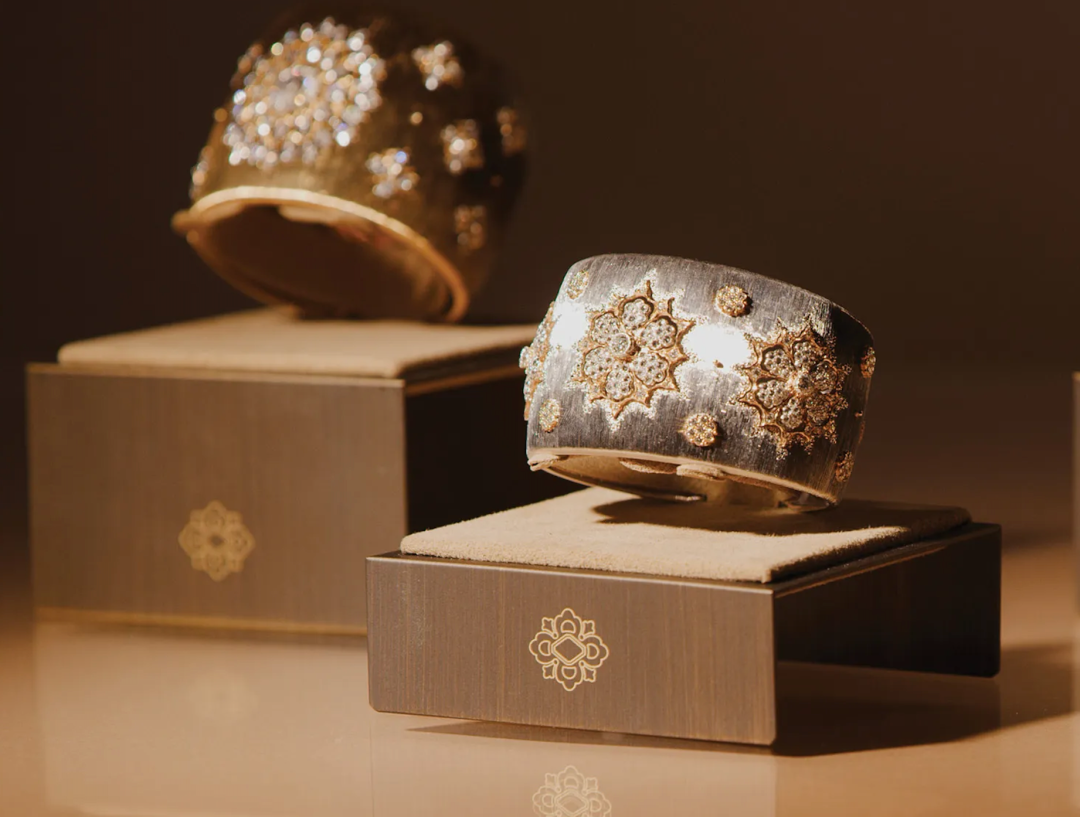In the past three years, hard luxury has entered the industry spotlight.
The hard luxury goods represented by high-end jewelry and watches, as well as the soft luxury goods mainly focused on high-end clothing and leather goods, although together constitute the macro map of the luxury goods market, they have long operated with vastly different logic and styles. Especially in the first two decades of the 21st century, luxury giants represented by LVMH led the scale expansion of the soft luxury market by wooing middle-class consumers, and the boundary between hard luxury and soft luxury became increasingly clear.
However, after LVMH fully penetrated the middle class consumers, this luxury goods giant specializing in fashion and leather goods also began to turn its attention to hard luxury and consider bringing the operational ideas that have been successfully verified in the soft luxury market to the hard luxury market.
Secondly, hard luxury brands enhance the pricing power of luxury goods giants through lower substitutability, exclusive patented processes, and other aspects, in order to consolidate their market position. Although LVMH has expanded its scale to become the world’s largest luxury goods giant, it still lacks a competitive advantage from high-end positioning in the competition with single brand groups Herm è s and Chanel at the top of the pyramid through core brands LV and Dior. There is an urgent need for hard luxury brands with higher average unit prices and top product unit prices to sit down.
In 2022, LVMH, the world’s largest luxury goods group, acquired the American high-end jewelry brand Tiffany&Co., becoming a key milestone in betting on hard luxury. LVMH Chairman Bernard Arnault’s four younger sons all entered the hard luxury business, Fr é d é ric Arnault entered the high-end watch brand Taghauer, Alexandre Arnault assisted in managing Tiffany, and Jean Arnault was in charge of LV watches.
At the same time, in the emerging incremental market of China, with the improvement of consumer spending power and the rapid growth of luxury goods awareness, this group of consumers are gradually exploring the world of hard luxury from soft luxury. Coincidentally with the arrival of the COVID-19 pandemic in 2020, the global economy has entered a weak cycle. In a volatile situation, high-end jewelry watches are favored by many investors due to their precious materials and high value craftsmanship, which have the function of preserving value and avoiding risks.
This has brought about the hard luxury market, especially the three-year golden period for Cartier’s parent company, Swiss Richemont Group.
In the fiscal year ending March 31, 2023, Lifeng Group’s sales increased by 19% year-on-year to 19.95 billion euros, approaching the 20 billion euro mark. Operating profit surged by 60% to 3.91 billion euros, reaching a historic high. The gross profit margin increased from 66.7% in the fiscal year 2022 to 68.7%.
In the fiscal year 2022, the sales of Lifeng Group increased by 44% year-on-year to 19.191 billion euros. Under the impact of the COVID-19 pandemic in the fiscal year 2021, Lifeng Group’s sales only slightly decreased by 8% to 13.14 billion euros, while its profits surged by 38% to 1.29 billion euros.
The high-end jewelry department with brands such as Cartier, Van Cleef&Arpelt, and Buccellati is particularly eye-catching. The department still recorded a 3% growth in the 2021 fiscal year due to the impact of the pandemic, a 49% year-on-year increase in the 2022 fiscal year, and a 21% year-on-year increase in the 2023 fiscal year to 13.427 billion euros. The high-end jewelry department contributed over 67.3% of sales, which continued to rise to 68% in the first two quarters of fiscal year 2024.
The professional watchmaking department is relatively stable. From a 21% decline in fiscal year 2021, a 53% increase in fiscal year 2022, and a 13% increase in fiscal year 2023 to 3.875 billion euros.
According to Euromonitor data, the global luxury jewelry and watch market share of Lifeng Group has steadily increased, with the former increasing from 19.9% in 2020 to 24.3% in 2022, and the latter increasing from 19.7% to 23.3% in the same period.
Overall, the stable model and investment value of Lifeng Group have been recognized by the market in the past three years. The group’s stock price has risen by about 60% since 2020, and during peak periods, it has risen by about 130%.
The high-end jewelry department, which contributes 70% of its revenue, is the growth engine of Lifeng Group, and Cartier is the ace of the high-end jewelry department. This is very similar to LVMH’s growth model driven by the fashion and leather goods department, and the role of Cartier brand is also very similar to LV. Whether in terms of brand sales scale, price range, product richness, or market awareness, Cartier has become a benchmark brand in the hard luxury market.
Although Cartier is classified as a high-end jewelry department, its watch business is also very stable.
According to the annual research report on the Swiss watch industry jointly released by investment institutions Morgan Stanley and LuxConsult, Cartier’s annual sales of watches successfully surpassed Omega in 2021, ranking second globally. In 2022, Cartier watch sales increased by 7% to 2.75 billion Swiss francs, second only to Rolex, with a total sales of 620000 watches.
However, the strong sales performance of Lifeng Group in the past three years has not brought peace to the capital market.
Starting from the end of 2021, Lifeng Group has been facing challenges from radical investors. From Artisan Partners, a US investment fund, to Third Point, a US radical hedge fund founded by Wall Street trader Daniel Loeb, and then to Bluebell Capital, external radical investors continue to pressure Richemont Group to accelerate its strategic restructuring.
The main reason is that although the core business of Lifeng Group is stable, the group’s stock price performance is far inferior to its peers. The latest market value of the group is about 61.9 billion Swiss francs, which is only one-third of Herm è s’ market value of 1984 billion euros and 18% of LVMH’s market value of 341.4 billion euros, although it has surpassed Kaiyun Group’s 47.8 billion euros.
Some argue that Lifen Group is one of the most undervalued targets in the current industry, and news of LVMH’s intention to acquire Cartier and Lifen Group has been circulating in the market for some time. In Bernard Arnault’s eyes, Cartier may be more dazzling than the Tiffany in his hand.
One of the root causes of the undervaluation of Lifeng Group is market dissatisfaction with Johann Rupert’s control.
The stocks of Richemont Group are divided into two categories: A-shares listed on the Swiss Stock Exchange, and B-shares not yet listed, held by Richemont Chairman and South African billionaire Johann Rupert through his own company. Among them, B-shares only account for 9.1% of the equity of Lifeng Group, but have 51% of the voting rights. In addition, no other single entity or shareholder has more than 3% of the voting rights.
At the same time, although some members of the board of directors of Lifeng Group own A-shares, there is no specific representative of A-share shareholders, which violates the Swiss law that “at least one representative is required for each class of shares”. This means that Johann Rupert holds the approval power for all proposals of the group, almost equivalent to one person making an independent decision.
The focus of Bluebell’s pressure on the Lifeng Group is to strike at the imbalanced voting and economic power within the Lifeng directors, directly challenge Johann Rupert’s unrestricted power, and completely internalize low governance efficiency.
It is worth noting that unlike LVMH, which is steadily implementing a succession plan, Johann Rupert from Lifeng Group has not disclosed any clear succession plans. Although Johann Rupert’s son Anton Rupert Jr. joined the board of directors in 2017 and may become the successor to the Richemont Group. But for six years, Johann Rupert has remained at the helm alone, and he has even bluntly stated that Anton Rupert Jr. will not become the CEO.
Another root cause of undervaluation lies in questioning the brand portfolio of Lifeng Group.
Bluebell Capital once boldly proposed renaming the Richemont Group to Cartier Group, in order to fully utilize Cartier, the most outstanding iconic brand under the group, and focus on and emphasize the jewelry and watch business.
As mentioned earlier, Lifeng Group relies on its high-end jewelry business, and Cartier is the most core growth engine among them. In addition to this core advantage, the group’s weaknesses are very obvious. On the one hand, the high-end watch market has been unstable for many years, and the performance recovery process of the professional watchmaking department is not consistent. On the other hand, other departments including Chlo é, Dunhill, Delvaux, Alaia and other fashion businesses have also performed poorly.
Compared to squeezing into the already crowded luxury fashion industry, investors believe that Lifeng Group should focus more on its core advantages to create more momentum and further widen the gap with competitors.
However, in the past few years, the jewelry and watch brands under the group have not made significant breakthroughs in the long-term business of the group, while leading luxury goods groups such as LVMH, Herm è s, and Chanel have continuously accelerated their layout in the jewelry and watch field, posing a threat to the Lifen Group.
In terms of weak fashion business, the investment of Lifeng Group is far less than LVMH’s determination to expand its hard luxury business, and fashion brands now heavily rely on marketing and retail expansion investment.
Without large-scale investment, the fashion brands under the Lifeng Group clearly lack competitiveness and hope for short-term improvement in the current fierce market competition.
In addition, there is the loss making e-commerce business Yoox Net-a Porter. Although Lifeng Group has already thrown this burden onto Farfetch, some analysts have expressed serious concerns about this complex transaction. At present, the European Commission has unconditionally approved Farfetch’s acquisition of a 7.5% stake in YNAP4, but this transaction will continue for many years.
According to the transaction details, in the first step, Farfetch will acquire 47.5% of the shares, and Lifeng Group will acquire approximately 55 million shares of Farfetch, with the option to acquire all remaining shares in five years. At the end of the first step, YNAP needs to have no net debt and at least $290 million in cash, and Lifen Group will provide a committed credit of $450 million to YNAP within ten years.
In the second step, Farfetch has the right to acquire the remaining YNAP shares within five years after the transaction is approved, which is the end of 2028. Lifeng has put options that can be exercised from 3 to 5 years after trading approval, i.e. from 2026 to 2028, but the EBITDA for the first 12 months of YNAP needs to be positive. Put or call options will be exercised by up to 15% to 16% of Farfetch’s shares. If put or call options cannot be exercised, YNAP will exit in the form of selling to a third party or IPO.
Completing this transaction requires numerous additional conditions, and the complexity of the transaction increases the risk exposure of Lifeng Group. With the decline of Farfetch’s stock price and the rampant rumors of company privatization, the market believes that YNAP may eventually return to Lifeng Group, and the continued uncertainty of this transaction may put pressure on Lifeng’s stock price.
The third root cause of undervaluation is the impact of the continuously volatile market environment on the hard luxury category.
Despite the positive impact of the pandemic on the hard luxury market over the past three years, the market has once again experienced changes in 2023. Not only the sluggish US market, but also the global luxury goods market as a whole has turned cold. Middle class consumers who were once passionate about hard luxury have quickly tightened their wallets, marking the end of a round of hard luxury frenzy.
The hard luxury market has returned to relying on the traditional game rules of high net worth core circles and long-term operation methods. Meanwhile, under the turbulence of the macro market, the affluent population has also become hesitant.
Keeping an eye on the future capital market, the imaginative space for Li Feng Group to achieve large-scale growth continues to be compressed, resulting in a lack of motivation to stimulate an increase in the already sluggish stock price.
The latest financial report data shows that in the six months to the end of September, Lifeng Group’s sales increased by 6% year-on-year to 10.2 billion euros, with a net profit of 1.5 billion euros, turning losses into profits from the previous year, but both fell short of analyst expectations. Sales in the second quarter fell by 2% to 4.9 billion euros, and after excluding the impact of exchange rates, revenue increased by 5%, far below the 19% in the first quarter.
By region, the Asia Pacific market covering China achieved a 14% increase in sales in the first half of the fiscal year, accounting for 42% of the group’s overall revenue, offsetting a 4% decline in the Americas. Europe, the Middle East, and Japan saw growth of 3%, 5%, and 2% respectively.
By business, Cartier’s jewelry department saw a 10% increase in revenue in the first half of the fiscal year to 6.95 billion euros, with only a 1% increase in the second quarter, a significant slowdown from the 24% increase in the first quarter. The best performing sector during the period was in the Asian markets where China and Japan are located, with strong sales growth of 21% in the first half of the year, while the United States experienced a 3% decline due to reduced demand.
The watch business, which includes brands such as Est é e Denton and IWC, fell 3% to 1.98 billion euros, with operating profit plummeting 23% to 390 million euros. Sales of Chlo é’s other departments fell 1% to 1.28 billion euros, mainly due to a 5% decline in the second quarter. Operating profit turned into a loss, recording a loss of 6 million dollars.
The financial report data also shows that YNAP, which is about to be acquired by Farfetch, has caused a loss of 700 million euros to Lifeng Group in the past six months, and a net asset revaluation has resulted in a non cash write down of 500 million euros. In the post financial report meeting, the message conveyed by Lifeng Group continued its conservative and prudent style. In terms of market demand, Johann Rupert remains confident in affluent consumers, but emphasizes the “caution” and “rationality” of their current behavior patterns.
“In the medium term, we are not worried about our customers’ disposable income, they are just a bit cautious. Chinese consumers will act more soberly than some Western consumers, they will not consume recklessly, and their behavior will be more rational. Demand exists, and their love for our products is also there. Currently, we see them starting to travel in nearby areas. I have never said pessimism, but caution because they are acting in a rational way. When people act in a rational way, they will not act excessively or make impulsive decisions.”
Johann Rupert also took the initiative to discuss the topic of brand acquisition, stating that he will not easily make a big acquisition.
A key issue is whether the acquired company has the right culture. If you acquire a company and its culture is poor, you must spend more management time repairing the culture, which I think is much more difficult than we imagine“
”Therefore, when you are rescuing a struggling business, you will start to shift your focus away from truly profitable future businesses and solutions to problems. So please don’t expect us to conduct large-scale value-added acquisitions. On the contrary, expect us to continue building brand assets and expanding our existing brand within a few years, perhaps 2 to 3 years
The insights shared by Johann Rupert may be accurate, but obviously did not bring the most coveted hope in the market at present. It can be said that there has always been a gap between the market’s expectations for luxury goods and the understanding of Lifeng Group’s traditional expertise in business.
Behind this is still the operational logic difference between soft luxury and hard luxury categories, with the latter placing more emphasis on long-term brand history and exclusive craftsmanship rather than short-term topic heat. At the same time, hard luxury heavily relies on supply chain capacity, with numerous production and sales system links and slow information transmission.
This deep-rooted inertia has hindered the development of Lifeng Group’s fashion business and made it difficult for it to flexibly utilize short-term market dividends similar to the past three years, resulting in poor flexibility.
A systematic supply chain construction and sales system transformation can certainly support the steady growth of Lifeng Group and demonstrate resilience and defense during market turbulence. However, for a leader in hard luxury, it appears to lack the leadership to drive industry innovation and adaptability to diversified businesses.
In an interview with Time magazine in New York, Alexander Arnault, the current CEO of Tiffany, admitted that the current operating cycle of the jewelry industry is too long, and the gap between each exposure is too long. Therefore, he began a series of intense marketing plans, filling Tiffany’s brand schedule to the brim.
In order to engage with Generation Z consumers, the digital transformation of high-end jewelry brands has become an irreversible trend. According to Lefty data, among the top 10 jewelry brands in media earning EMV in 2022, the head effect is significant. Bulgari won the top spot with an EMV of 347 million US dollars, a year-on-year increase of 101%. Tiffany and Cartier ranked second and third respectively with EMVs of $285 million and $269 million, close to the total of the bottom seven EMVs on the list, with a year-on-year increase of 31% and 20%.
It is worth noting that both Bulgari and Tiffany belong to LVMH.
The question of whether soft luxury and hard luxury are comparable and compatible still needs experimental verification. LVMH is still struggling to digest Tiffany, and Tiffany’s current sales performance is not yet satisfactory to the market. In the end, Alexandre Arnault’s aggressive approach to soft luxury operations for hard luxury brands may not be successful.
But the problem is that fast-paced LVMH can slow down when necessary and patiently adapt to the long-term tradition of hard luxury brands, but the inefficient hard luxury model is difficult to adjust to high-speed mode in other businesses such as fashion.
Among the numerous emerging dynamic issues, Lifeng Group lacks flexible and targeted strategies. In addition to Cartier, the current strong brand momentum of Van Cleef&Arpelati and the acquisition of Buccellati in 2019 have become the latest trumps in the high-end jewelry department. Van Cleef&Arpelati is able to unleash its potential thanks to the patience of the Richemont Group, which has been brewing for many years.
However, it should also be noted that the insufficient production capacity brought about by the slow pace is giving rise to a large-scale gray market in the Chinese market. Some analysts are concerned that high imitation products that are not cheap are eroding the market share of brands. In the current cold market winter, brands are facing a group of more budget conscious consumers. Mixing genuine and fake products has become a behavior habit for many consumers, and more and more consumers admit that there is no shame of counterfeit products.
Behind the changing market trends lies a deeper logical difference between soft luxury and hard luxury, but the barriers may have been broken.















